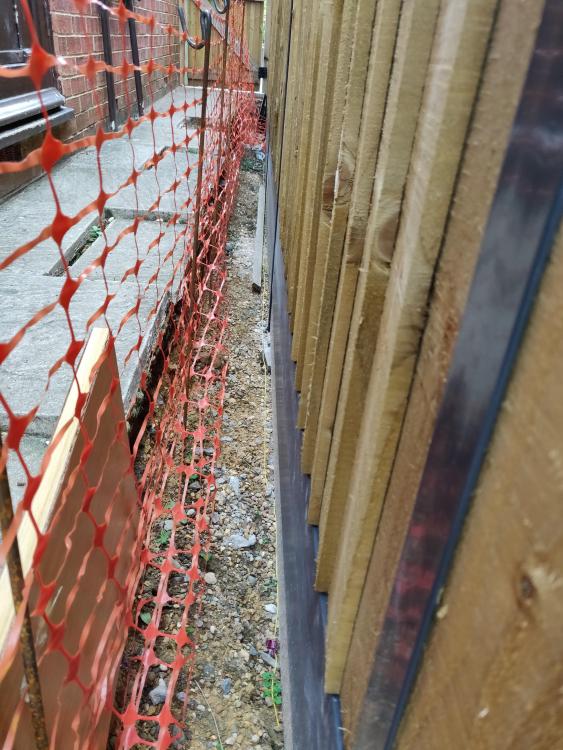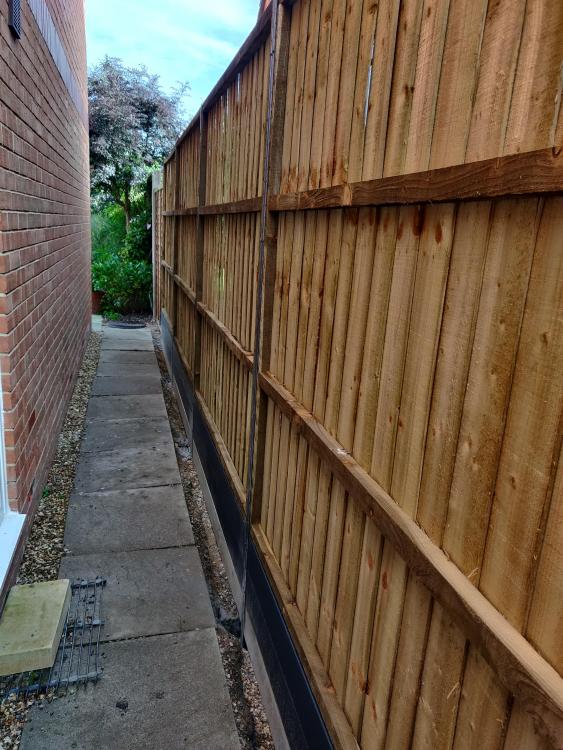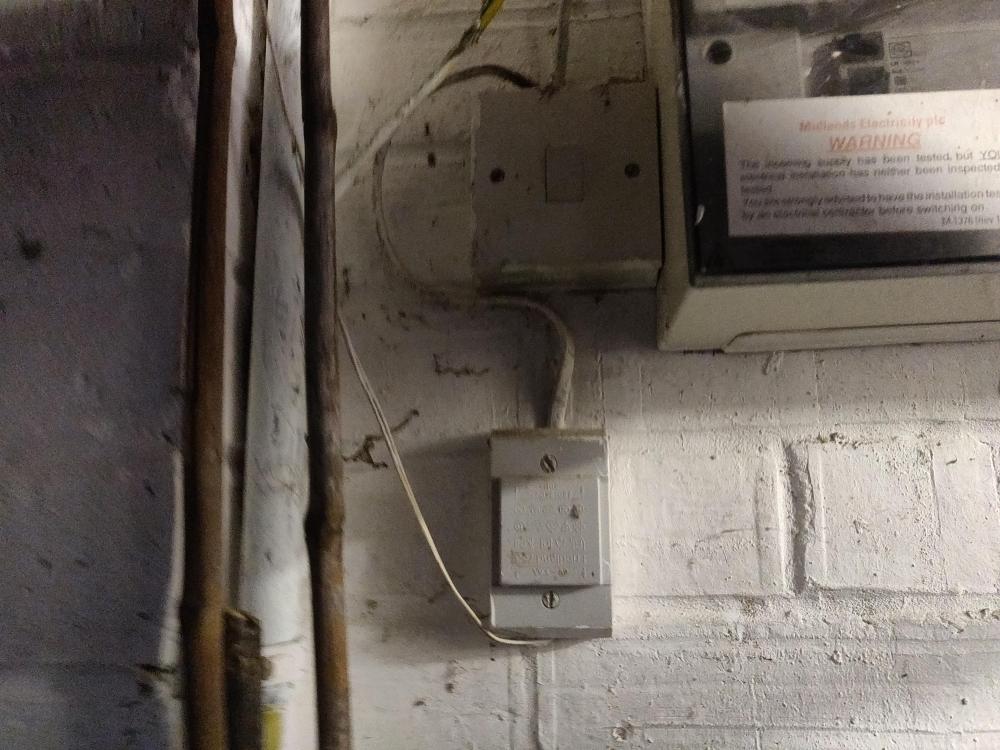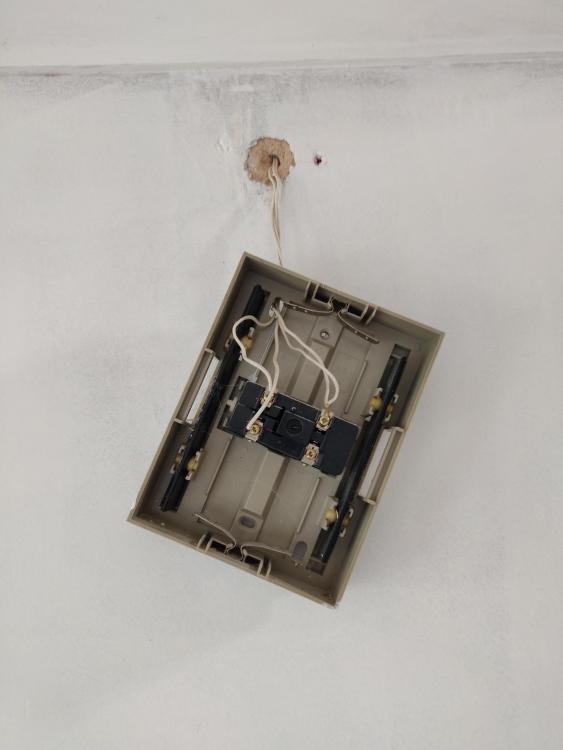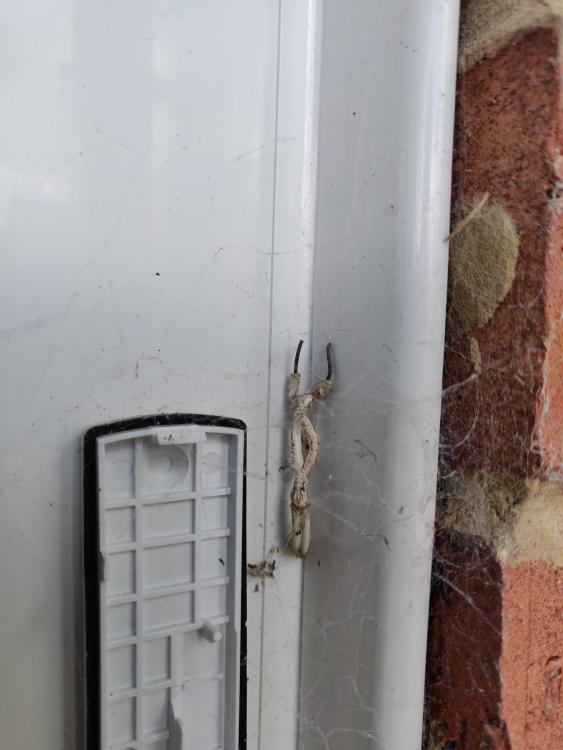
shbrooks
Members-
Posts
21 -
Joined
-
Last visited
Recent Profile Visitors
The recent visitors block is disabled and is not being shown to other users.
shbrooks's Achievements

Member (3/5)
0
Reputation
-
Thank you that link was helpful, although it didn't address any of the queries I have currently have, which I can't seem to find answers to.
-
Hi all. I've laid a fairly deep subbase, say 200mm in 50mm layers, on top of a non woven geotextile membrane down the side of our house between my neighbour and I, and plan to lay porcelain tiles on top in the future. For the time being I wanted to make the area safe as the area had been partially excavated when we had our fence replaced due to our side being 500mm higher than our neighbours (we had to previously excavate a footwide trench to remove the old posts/gravel boards). I plan to take up the rest of our patio which links round, and lay a new subbase for this in the future (existing slabs currently laid on clay ?) I have a few queries having not laid a patio before. Is the compacted subbase a suitable temporary finish or will it degrade over time?..if so, how long can you leave it before adding the tiles on top? Do I need a weed membrane on top of the subbase? I can't imagine weeds will grow between the subbase and the tiles, but would like to know if this does often happen. Do I need to introduce movement joints into the subbase, and/or tiles? Can I lay the subbase in sections? We're altering the house in the future, which will create a larger patio area but I can't lay the subbase for this until we begin the alteration works. If it is possible to lay the subbase is sections, is there anything I need to do to teeth the different sections together? Thanks for reading!
-
Hi there. Was wondering what type of size of gravel I should be ordering to backfill my ducting trench. I've read that the gravel needs to be "well-graded, free-draining, angular, durable". Would something like this be suitable? https://www.drainagesuperstore.co.uk/product/pea-gravel-shingle-aggregate-1-tonne-dumpy-bag.html Thank you!
-
Thank you ProDave. I'd rather use ducts I think, so I can get the duct in the ground and pull the cable through at a later, and also add/replace any cables if they become problematic in the future. Any ideas what size SWA cable I need?
-
Hello all. I'd like to install a number of lights around the perimeter of my medium sized garden to uplight a few trees and shrubs - probably 4 to 5 lights in total. Having recently replaced all of our fences, I currently have a trench I can drop a duct into and install the lighting cables at a later date. I originally thought I could bury a duct and have duct 'T' points which allowed each light to be served by a separate cable. However, I couldn't find a suitable sized duct with 'T' points, the smallest being 110mm, which I found was too large. I'm now planning on running a single cable in a duct, which rises above the surface at each lighting point and into a junction box, which then has a tee-off into each light. The main cable/duct then dips back below the ground until it reaches the next lighting point. Presuming this is possible and a more suitable, what size cables and ducts would I need?
-
Backfilling Trench along Boundary
shbrooks replied to shbrooks's topic in Landscaping, Decking & Patios
Thanks for your comments. Would gravel/pebbles be solid enough to form a substrate for paving? Excuse my ignorance - I've never done paving! -
We recently chose to replace our boundary fence as the concrete posts were leaning badly onto our neighbours side. Our neighbours land is roughly 1 1/2 feet lower than our side so the concrete gravel board was acting as a retaining wall which had actually started bowing and cracking in the centre. I decided to dig out a trench on our side to take the weight off the new gravel boards (now comprising a 150mm concrete board, with two 300mm durapost composite boards with a steel retaining rod) and was planning on shuttering this area and pouring concrete to create a self-supporting concrete strip. I've now having doubts about this approach as I don't want to make this area completely impervious. I'm looking for a solution which won't place load upon the new gravel boards, allows water through, but it solid enough to receive paving. Any thoughts welcome.
-
Had a look in that socket today and whilst I think I know what I'm doing, I thought it best to check! Do I just remove the black and red wire coming from the transformer, leave everything else in situ and screw the plug back together?
-
Thanks for all the replies. Incredible response as always. Had a look by consumer unit and found this:
-
I was hoping someone might be able to confirm whether or not this old Doorbell is mains powered or battery powered and therefore safe to remove and leave the wire in the wall? I presume it is battery powered but would like to be sure before I cut the wire!
-
Do you mean just at either end of the gravel board or the entire length?
-
Hello, I'm looking to replace my concrete post fence which presently is leaning in all different directions. I want to do a proper job and make sure that the fence remains level. As the fence panels will sit upon a gravel board, I wanted to know the best way to make sure that the gravel boards don't sink - even slightly, as I want to top of the fence to run through. I think it would be overkill to pour a strip of concrete beneath the gravel boards so wondered what else might be suitable?
-
Isolated Shower still showing voltage
shbrooks replied to shbrooks's topic in Electrics - Kitchen & Bathroom
Is there any way of determining where any electrical fault might like if the isolator cord is fine? -
Isolated Shower still showing voltage
shbrooks replied to shbrooks's topic in Electrics - Kitchen & Bathroom
...the old shower is pretty poor anyway. It was to be set on heating setting 10 to get an averagely warm shower. -
Isolated Shower still showing voltage
shbrooks replied to shbrooks's topic in Electrics - Kitchen & Bathroom
Thanks for your quick reply. So I can still fit the shower despite there being a low voltage reading? If it is the isolator cord, what caused this to fail?

